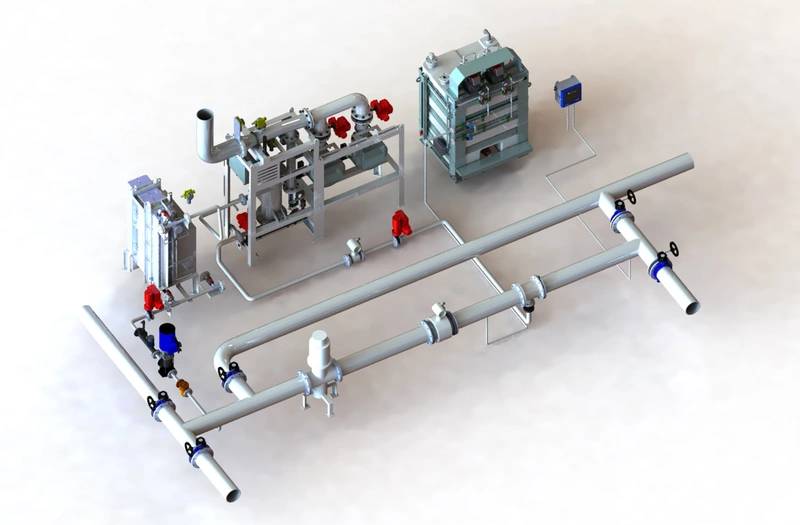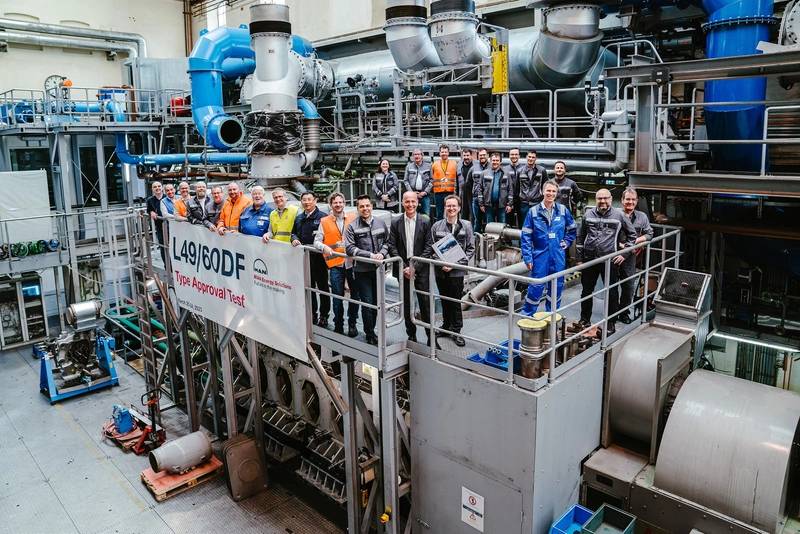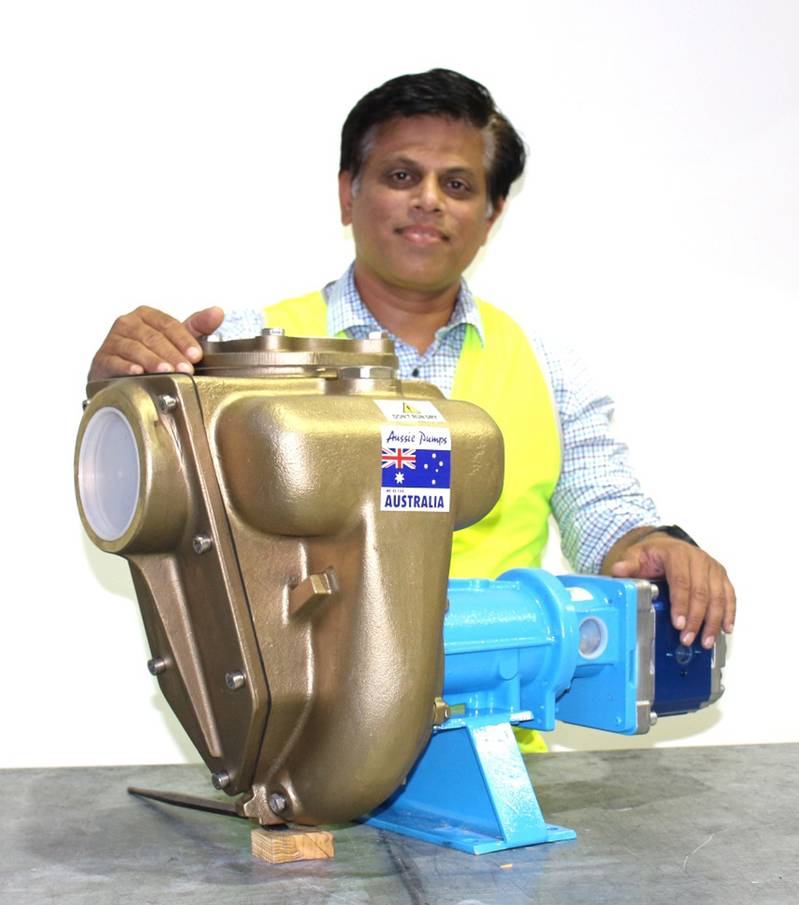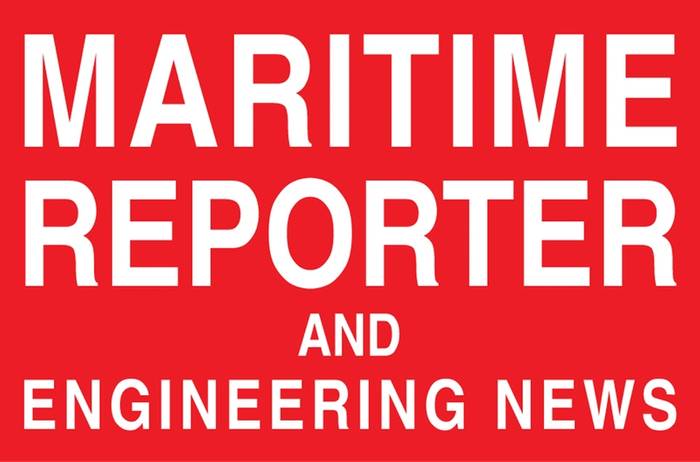Tech Files
New Products & Systems

HYCHLOR 2.0 Eliminates the Filter, Earns USCG Type Approval
Techcross received USCG type approval for its filter-less HYCHLOR 2.0, an improved product compared to HYCHLOR 1.0, which received the same type approval in 2020. A significant feature of HYCHLOR 2.0 is the elimination of the filter. Filters, which play a role in filtering out sediment, have been a source of many service issues due to clogging. Removing the filter not only eliminates such concerns but also results in increased customer benefits by saving installation space and costs.
While the absence of filters may raise concerns for some, Techcross has been selling the direct electrolysis ECS without a filter since the early stages of the BWMS market. In addition, Techcross has applied its self-developed DTS (TRO concentration measuring device) to HYCHLOR 2.0., enhancing accuracy and durability. The DTS can accurately measure TRO concentration even in highly turbid conditions of 850 NTU. To date, Techcross has sold more than 6,000 BWMS units globally.

Dredger is First Marine App for Most Powerful MAN Medium-Speed Engine
MAN Energy Solutions won the contract from Royal Boskalis B.V. to supply 3 × MAN 49/60 engines for a 31,000-cu.m. Trailing Suction Hopper Dredger (TSHD). Each engine will come accompanied by an exhaust-gas after-treatment system, namely an MAN Low-Pressure Selective Catalytic Reduction (LP-SCR) system. The vessel will be built at Royal IHC's Krimpen aan den IJssel yard and is expected to enter service in mid-2026.
The TSHD will be diesel-electric powered with two Azipods to allow vessel operation even at shallow draft. All major drives will be electrically driven and controlled by frequency converters, enabling each system to operate at optimal speed and power.
The BV-classed main diesel engines will be capable of running on either conventional fuels or on sustainable fuels, such as biodiesel (HVO and/or FAME). Furthermore, the ‘dual-fuel’ engines will also be delivered as (green) ‘methanol-ready’.
The MAN 49/60 successfully passed its type approval test in March 2023 and features a high power-per-cylinder of 1,300 kW, reducing the number of installed cylinders necessary to meet power demands. While in this particular project six-cylinder engines are applied, the L-type of the engine can accommodate up to 10 cylinders, which make it capable of propelling ships typically powered by V-engines.
The 49/60 is also available as 12V and 14V engine variants.

Bronze Aussie Goes Hydraulic
A big 4-in. NiAl bronze self-priming pump with hydraulic drive has been released by Australian Pump Industries, a supplier of marine specific pump equipment and is a major supplier and service station for most Navy platforms.
The new pump called the B4XRA/B HYD34 produces 2200lpm and can operate at up to 42psi. It can also lift water through a vertical suction lift of 6m.
The machine comes complete with a quality mechanical seal with carbon/alumina faces, nitrile elastomers and 316 stainless steel seal casing. There is a Viton seal option available as well for applications like “oily bilge” pump out.
Aussie Pumps expects the new bronze pump to be a big success, with applications for barges, ferries, tugs, fishing boats and aquaculture projects.
SIONYX Nightwave helps to make Night as Clear as Day
SIONYX last year launched Nightwave, a first-of-its-kind marine camera system built around the brand’s proprietary Black Silicon BSI CMOS sensor. Nightwave allows mariners to navigate safely by easily spotting hazards and debris in moonless starlight without additional illumination. Built to operate in the toughest marine environments, the night vision camera is IP67 waterproof and shock rated. Nightwave integrates to most any vessel's electronics by connecting to major brand MFDs via the analog video output. With flexible mounting and setup, Nightwave can also connect to a mobile device via Wi-Fi for an enhanced user experience. At an MSRP of $1,595.00, Nightwave sets a new standard of affordability for night vision.
Features include:
-
< 1mlx moonless starlight sensitivity allows mariners to see well beyond human eyesight and detect a man-sized object at 150m.
-
The system’s high resolution detector provides upgraded quality imaging capability in near total darkness
-
Wide 44 degree field of view increases situational awareness to spot unexpected obstacles, debris, markers, vessels, and more
-
Convenient installation flexibility: permanent mounting hardware is included, as well as a standard 1/4”-20 mount interface.
-
Nightwave can be oriented ball-up or ball-down, to meet any challenging mounting requirements
Tymor Marine to Refine Draft Survey Technology
Tymor Marine’s DRFT MRKS software uses artificial intelligence with deep learning applied to video capture to provide an accurate measurement of the weight and load of a vessel. It recently was awarded funding from Scottish Enterprise to support the development of an app-based version of its draft survey technology.
Tymor Marine originally developed DRFT MRKS to help its in-house naval services team overcome the inherent challenges of conducting draft surveys. The firm was later supported by Scotland’s innovation center CENSIS and the University of Edinburgh to optimize the deep learning functionality of the software.
DRFT MRKS tech helps to mitigate human error and challenging factors such as faded or rusted markings, poor lighting, marine growth, bad weather, and the swell of the waves. The video capture can be collected at a safer distance from the vessel, either by a mariner using a handheld device on a boat, or by drone.
Portable Hydraulic Control System for Emergency Tow Line Cutting
Webtool announced a compact, portable hydraulic control system for emergency tow line cutting in combination with a Webtool cutter. The lightweight hydraulic control is a self-contained unit including an accumulator, control valves and hoses for connection to a Webtool cutter.
The hydraulic control system includes a 4-litre, 345-bar hydraulic accumulator operated by two ball valves and designed to cut fiber lines up to 80mm. It is stored in, and operated from, an offshore approved roller storage crate that can be readily stored when not in use. Designed for single person operation, it also includes a pressure gauge for live system monitoring. Once connected to the Webtool cutter positioned on the tow line, the cutting system can be activated and the fiber line cut in seconds. There is a simple reset procedure ensuring the control system is prepared for its next deployment.
Scanunit Helps Ferry Aurora in first PFAS/PFOS Conversion
Battery-powered Öresundslinjen ferry notches up an environmental first with turnkey conversion and decontamination of soon to be outlawed PFAS/PFOS fire-fighting foam to an environmentally friendly alternative.
Scanunit has carried out what it believes is the world’s first replacement and decontamination of a PFAS/PFOS1 foam firefighting system on a commercial vessel. Aurora, a 1992-built ferry operated by EQT-owned Öresundslinjen (a subsidiary of Molslinjen), was the vessel concerned and the work was carried out over the weekend of January 27/28. An IMO resolution adopted will see the phase-out of foam firefighting systems that use fluorinated foams containing perfluoro-octane sulfonic acid (PFOS) as the foam-producing component. Because of their negative impact on human health and the environment. The longevity of these chemicals has resulted in them being dubbed ‘Forever Chemicals’.
Work on Aurora involved the removal of some 200 liters of AFFF foam containing PFAS/PFOS followed by decontamination of the tanks, 200 meters of pipelines and 52 spray nozzles of the ship’s firefighting system.
The decontamination was performed by Scanunit using Sani A supplied by LifeClean a specialist chemical provider based in Sweden. Decontamination and cleaning of the system produced 2,200 liters of wastewater which was removed by waste disposal contractor Fortum.
Emptying the system of the PFAS foam began at 22:30 on Saturday and the system was able to be refilled with a fresh supply of fluorine-free foam concentrate by 06:00 on Sunday.
Testing of the system after the changeover showed it was now far below the ECHA and EPA restriction of 1 ppm The test carried out by Eurofins laboratory analysts on the Aurora sample returned a result of just 4,400ng/l or 0.0044ppm.

